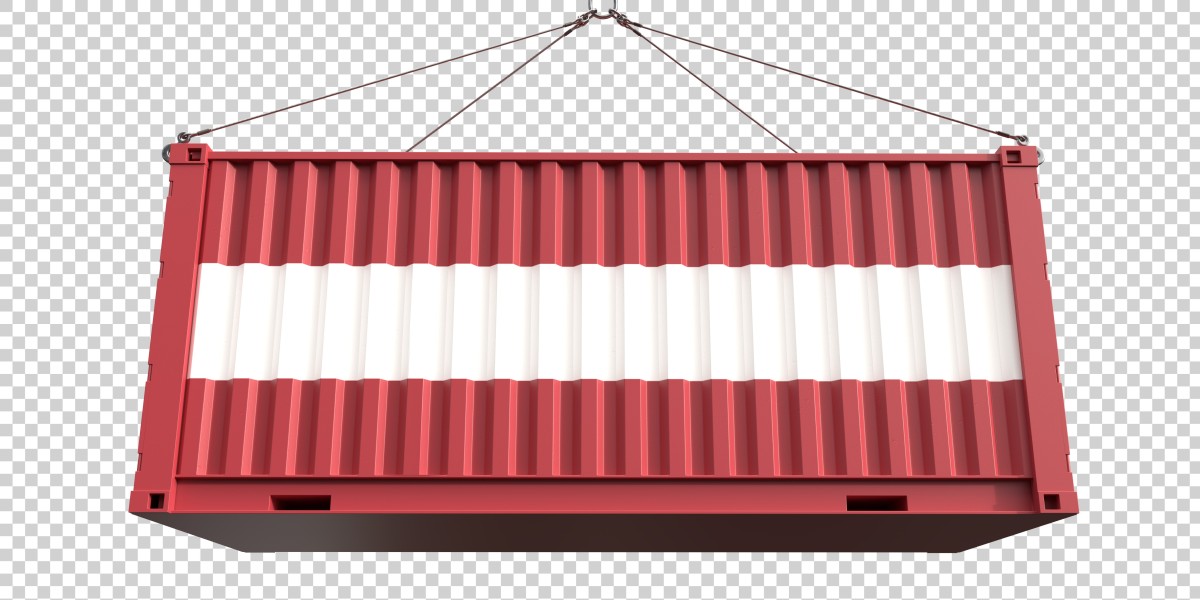Shipping containers are the unsung heroes of global trade. These steel boxes, often seen stacked on docks, ships, and trains, are essential for moving goods across the world. They have revolutionized the way products are transported, making it faster, safer, and more efficient than ever before. In this blog, we’ll explore the history, types, and uses of shipping container, and how they play a vital role in modern logistics.
What is a Shipping Container?
A shipping container, also known as an intermodal container, is a large, standardized, and robust container used to transport goods by sea, rail, or road. Made from durable materials like steel, shipping containers are designed to withstand harsh weather conditions and rough handling during transportation. They come in different sizes, with the most common being 20 feet and 40 feet long.
These containers are versatile and can carry almost any type of cargo, from electronics to furniture, to food products, to heavy machinery. The standardization of shipping containers has allowed for seamless transfers between ships, trucks, and trains, creating a unified global supply chain.
A Brief History of Shipping Containers
Before the advent of modern shipping containers, transporting goods across seas and lands was a highly inefficient and costly process. Cargo was often packed manually, and loading and unloading were time-consuming, labor-intensive tasks. Ships carried bulky, individually packed goods, which led to delays, theft, and damage.
In the mid-20th century, Malcolm McLean, a trucking magnate from the United States, revolutionized shipping by developing the modern shipping container. McLean’s idea was simple: create a standardized container that could be easily loaded onto ships, trucks, and trains, reducing the time and cost of handling goods.
In 1956, McLean’s company, Sea-Land Service, began using standardized containers for international trade. The concept quickly gained traction, and by the 1970s, the use of shipping containers had become widespread. This change drastically reduced shipping costs and paved the way for the booming global trade industry we know today.
Types of Shipping Containers
Shipping containers come in various shapes and sizes, each designed to meet specific needs based on the type of cargo being transported. Here are the most common types:
1. Standard Shipping Containers (Dry Van)
These are the most common types of containers used for general cargo. They are fully enclosed and made of steel, providing protection from the elements. They are ideal for transporting most types of goods, including electronics, textiles, and machinery.
- Size: Usually 20 feet or 40 feet long
- Use: General cargo, dry goods
2. Refrigerated Containers (Reefers)
Refrigerated shipping containers, or “reefers,” are designed for transporting perishable goods that require temperature control, such as food and pharmaceuticals. They are equipped with cooling units to maintain a constant temperature throughout the journey.
- Size: Typically 20 feet or 40 feet long
- Use: Perishable goods like fruits, vegetables, meat, dairy, and pharmaceuticals
3. Open-Top Containers
These containers are used for cargo that is too tall to fit into standard containers. They have a removable roof or no roof at all, allowing for easy loading and unloading of oversized items, such as machinery or construction equipment.
- Size: Commonly 20 feet or 40 feet long
- Use: Oversized or bulky items
4. Flat Rack Containers
Flat rack containers have a flat base with no sides or top. These are ideal for transporting large or heavy items that cannot be easily packed into a standard container, such as vehicles, large machinery, or industrial equipment.
- Size: Typically 20 feet or 40 feet long
- Use: Large, heavy, or oddly shaped cargo
5. Tank Containers
Tank containers are designed to transport liquid or gas cargo. They are typically made of stainless steel and have a cylindrical tank for holding liquids or chemicals. These containers are commonly used for shipping bulk liquids such as chemicals, oils, and beverages.
- Size: Commonly 20 feet long
- Use: Liquid cargo, chemicals, and gases
6. High Cube Containers
High cube containers are similar to standard containers but have an extra foot of height. This additional space makes them ideal for shipping goods that require extra volume, such as furniture, textiles, and lightweight materials.
- Size: Typically 40 feet long
- Use: Bulkier or lighter cargo that requires more space
How Shipping Containers Have Transformed Global Trade
Shipping containers have transformed the logistics and transportation industry in profound ways. Here are some of the key benefits:
1. Standardization
Before containers, cargo was loaded and unloaded in a variety of ways, making the process inefficient and prone to errors. The introduction of standardized containers has simplified the logistics of transporting goods. No matter where in the world a container is being transported, it fits into the same standard systems for ships, trucks, and trains, making the process more streamlined and efficient.
2. Cost Efficiency
Shipping containers have made transporting goods much more affordable. By reducing the time it takes to load and unload cargo, shipping containers help lower labor costs and improve overall efficiency. Additionally, because containers are durable and can be reused, businesses save on packaging and handling expenses.
3. Security and Safety
Shipping containers provide better security than the previous methods of transporting goods. Once loaded, the cargo is sealed and locked, minimizing the risk of theft or damage. Containers are designed to protect their contents from the elements, and their robust construction helps to prevent loss during long voyages.
4. Increased Global Trade
By making transportation faster and more cost-effective, shipping containers have opened up new markets for businesses, allowing them to reach customers on the other side of the world. They have played a pivotal role in increasing international trade and helping to grow the global economy.
5. Environmental Impact
Shipping containers have also had a positive impact on the environment. By using containers that are durable and reusable, waste is minimized. Furthermore, because containers can be stacked efficiently on ships and trains, fewer trips are needed to transport large quantities of goods, reducing fuel consumption and emissions.
Shipping Containers in Modern Applications
Beyond international trade, shipping containers have found use in various other applications, both creative and practical. Here are some innovative uses of shipping containers in today’s world:
Modular Housing: Shipping containers are increasingly used for building affordable homes or temporary shelters. They provide a cost-effective solution to housing shortages and can be stacked to create modular living spaces.
Pop-Up Retail Spaces: Many businesses are using shipping containers as mobile retail units or pop-up stores. They are easy to transport and can be converted into functional, stylish spaces for selling goods.
Storage Solutions: Shipping containers are frequently used as secure and weather-resistant storage units for individuals or businesses needing extra space.
Mobile Offices and Restaurants: Companies are repurposing shipping containers to create mobile offices, cafés, and even entire restaurants. These containers offer flexibility, low construction costs, and a modern aesthetic.
Conclusion
Shipping containers are more than just boxes for transporting goods—they are the foundation of modern global trade, providing an efficient, secure, and cost-effective method of moving products across countries and continents. Their versatility, durability, and ability to be repurposed for other applications make them indispensable in both logistics and creative industries.
Whether you are a business looking to expand globally or a creative individual exploring innovative construction ideas, the humble shipping container continues to prove its worth in many areas of life. Its impact on global trade and everyday life is undeniable, making it one of the most important inventions of the 20th century.



